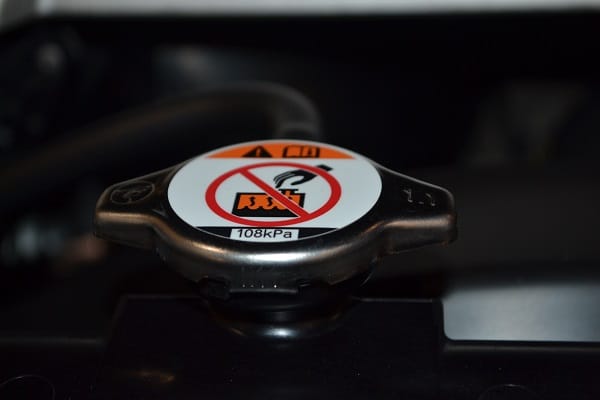The pressure is on
By Chris Holley, MACS Contribitor
By appearance, radiator caps seem to be a simple device. Yet, many technicians do not understand the cap’s real function, and they believe the increased pressure rating on a radiator cap helps an engine run cooler. That theory is not correct. As far back as the 1940s (earlier on some models), the manufacturers understood the benefit of pressurizing the cooling systems.
In William Crouse’s Automotive Mechanics textbook from 1946, he stated, “to improve cooling efficiency and prevent evaporation and surge losses (fluid losses due to extreme braking), many late automobiles use a pressure cap on the radiator.” Note, he stated “cooling efficiency” and not “cooling temperature.” He continued, “the use of a pressure cap on the radiator increases the air pressure within the cooling system by several pounds so that the water (coolant) may be circulated at higher temperatures without boiling.”

In a cooling system with a 50-50 mix of antifreeze and water (distilled, deionized, etc.), the boiling point is roughly 220°F. With every pound per square inch (PSI) placed on the cooling system, the coolant’s boiling point raises approximately 3°F. A 15 PSI pressure cap twisted onto the radiator will result in a 45°F boiling point increase over the 220°F for a 265°F boiling point.
The cooling system can run at an increased temperature without concern of boil over. The higher temperature coolant enters the radiator, and the difference between the radiator and the ambient temperatures is substantial. On a hot day with an ambient temperature of 100°F and the coolant in the radiator at 225°F, the radiator will be able to dissipate its heat (measured in British Thermal Units (BTU) or calories) to the “cooler” 100°F air. With the significant temperature difference, the cooling system efficiency is increased.
Many customers, and even some technicians, start to panic when the temperature gauge creeps into the 210-220°F range. They think the engine is running hot (overheating), but with a 16 PSI cap, the engine is not running hot; it will not boil over until about 268°F. The engine can efficiently operate in the 220-235°F range without concern, provided the coolant reaches that temperature and then stabilizes. Theoretically, if the cooling system does not boil over or push out the coolant from the overflow or degassing tank, the cooling system is operating effectively.
Today, some vehicles have surpassed the standard 15-16 PSI caps and have increased the factory caps up to 22 PSI. These caps extend the boiling point to over 285°F (220°F + 66°F). Again, the increased boiling point allows the engine to run hotter, but the cooling system remains boil-free, and the system efficiency is further improved.
While a discussion about the importance of the radiator cap’s pressure and vacuum relief valves or the closed system with a coolant overflow or degassing tank is necessary, it is essential to remember the cap’s job. It increases the engine cooling system efficiency, yet it does not lower the engine temperature.
If you like the content you see in our blog, consider becoming a MACS member and join us today!
Leave a Reply